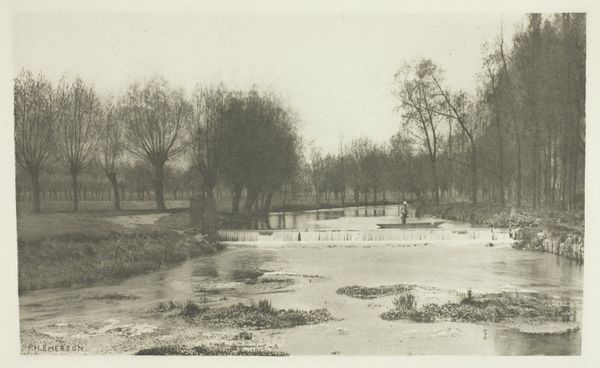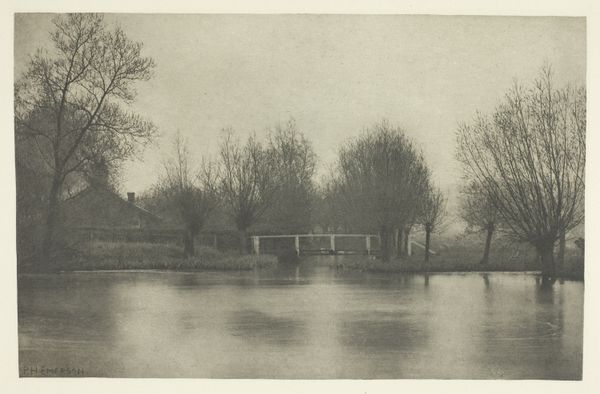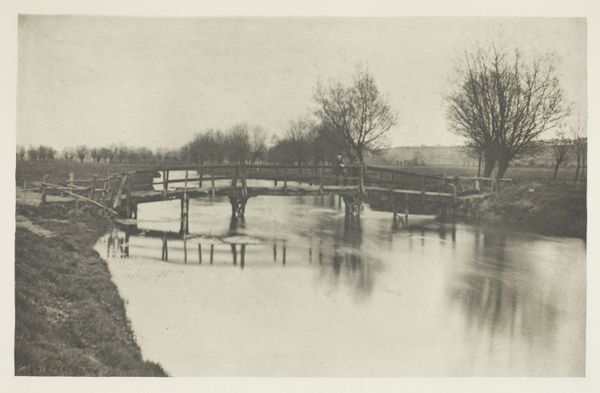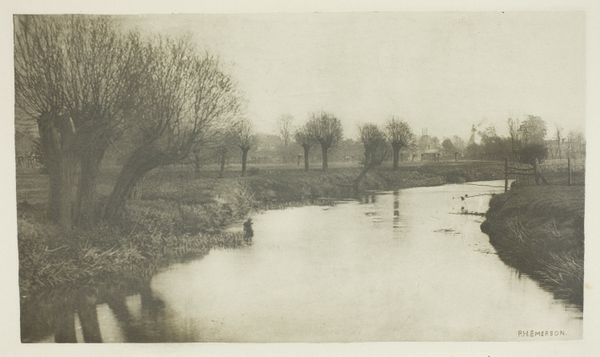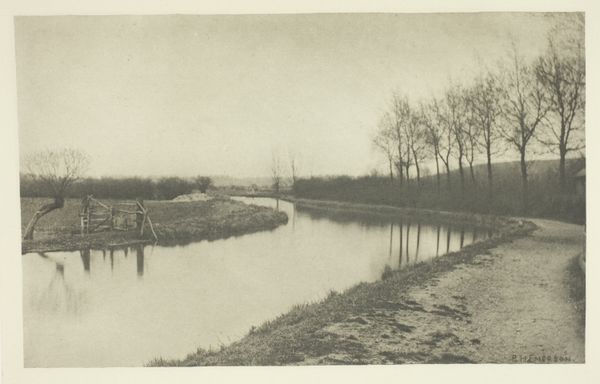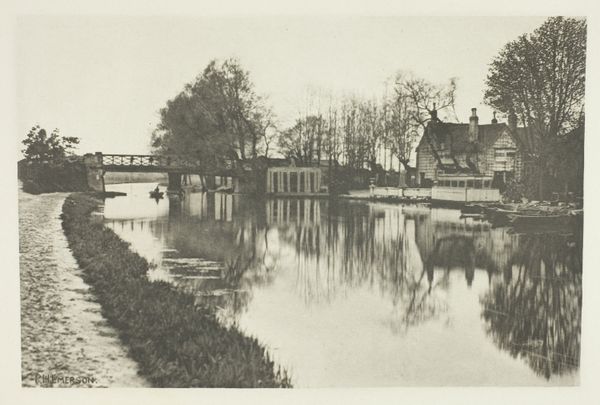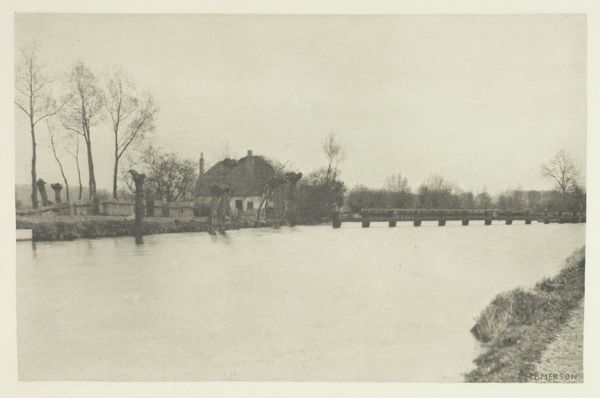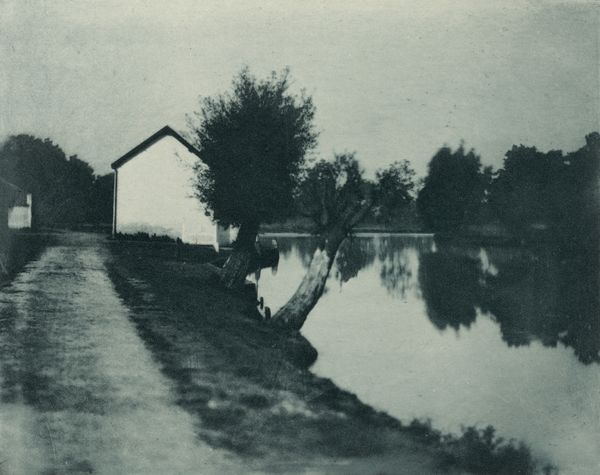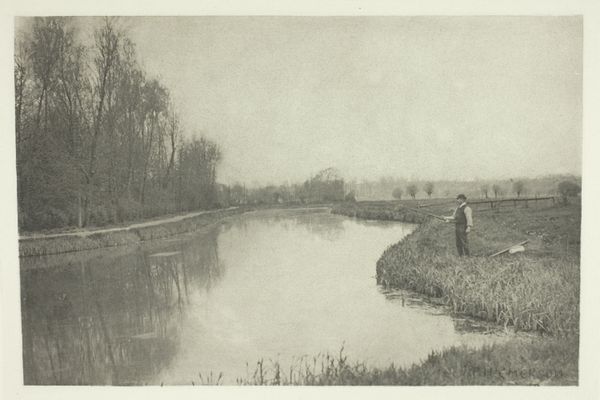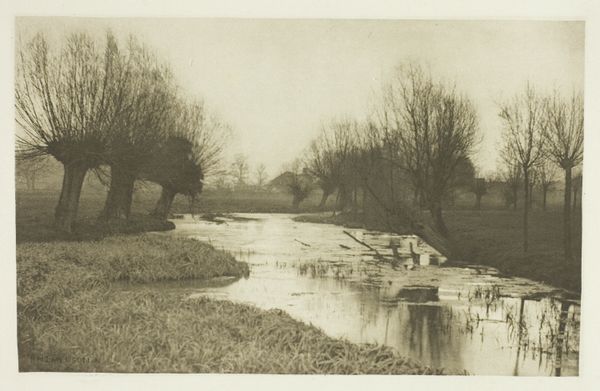
photography
#
16_19th-century
#
pictorialism
#
impressionism
#
landscape
#
natural light
#
photography
#
monochrome photography
#
genre-painting
Dimensions: 13.1 × 20.1 cm (image); 15.2 × 22 cm (paper); 25.1 × 32 cm (album page)
Copyright: Public Domain
Curator: What strikes me most about Peter Henry Emerson’s photograph, “Field's Weir, Near Rye House” from 1888, is its incredible atmospheric quality. It is as though he has captured the very air of that day. Editor: Indeed. My first impression is how muted the tonality is. It evokes a sense of stillness, of a quiet, personal moment by the water. The light is so soft. Curator: Emerson, deeply influenced by Impressionism, advocated for photography as an art form that could depict nature as it truly appeared, in all its subtle nuances. He even rejected manipulated images, championing "naturalistic photography". Here we see that ideal expressed in this tranquil riverside scene. Editor: And this championing of 'naturalism' occurred against the backdrop of rapidly industrializing Victorian England. Water held complex symbolic importance then—seen in Romantic poetry, paintings and philosophical treatises, all referencing purity and emotional depth in flowing water. Emerson’s subject quietly acknowledges this history, this deep sense of connection. Curator: Precisely! Notice the lone fisherman; how Emerson frames this figure almost anonymously against the expanse of water and sky. He represents humanity’s interwoven presence within—and dependence on—the natural world. The fisherman reminds us about human sustenance derived directly from nature. The subdued tones underscore a certain melancholic introspection too, about simpler times before industrialisation irrevocably altered rural life. Editor: The composition also speaks volumes. Emerson’s Rule of Thirds guides our gaze through varying spatial planes—foreground water vegetation blending into middleground bridge architecture toward muted horizons; creating pictorial harmony mirroring deeper themes concerning mankind’s humble relation with environment itself. It serves ultimately—in understated manner—to reflect socio-political awareness of shifting times when such values underwent radical shifts. Curator: Emerson’s photograph then becomes not just documentation; it's visual elegy—mourning simpler rhythms while quietly celebrating enduring connections linking mankind forever back natural roots. Editor: Yes, looking again at "Field's Weir, Near Rye House," its enduring appeal lies precisely here, the artwork being rooted so firmly not just historically speaking through documenting particular time slice though more enduring concerns connecting humanity both natural surrounding world socio economically evolving historical forces constantly transforming ways being connecting.
Comments
No comments
Be the first to comment and join the conversation on the ultimate creative platform.
